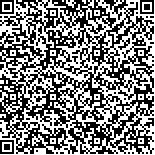| 摘要: |
| [目的]随着农业多元化进程,在乡村地带出现的旅游产业空间具有独特的发展特点。京津冀协同发展战略推进过程中,城市群建成区之外的乡村地带是协同发展的重要阵地,休闲旅游是其重要的产业抓手。京津冀乡村旅游类型特征和空间分布呈现出一定规律和特征,这种规律和特征对指导乡村地域规划和乡村旅游产业发展实践有重要意义。[方法]文章是大数据与传统旅游地理学方法的结合,利用网络数据采集手段抓取所有乡村旅游数据,通过地理信息技术提取属性信息,依托统计分析工具将乡村旅游点进行聚类划分,并以空间因子解释刻画乡村旅游空间类型。[结果]通过地理空间大数据的方法对京津冀乡村旅游空间进行区划,12个指标通过主成分分析剔除了平均温度、人口密度、GDP等3个指标,其余指标可划分为3个主成分。3个主成分对乡村旅游点进行空间聚类与合并,可形成4类空间。[结论]乡村旅游本底条件、配套设施条件、客源吸引潜力是京津冀乡村旅游空间区划的维度,京津冀乡村旅游可划分为近郊游憩型、景区集聚型、农业休闲型、山野/原野度假型等类型。每种类型在与城市的距离、立地属性、交通条件、旅游资源、游憩机会等方面有各自特征,具有不同的集聚规律。 |
| 关键词: 乡村旅游 地理大数据 京津冀 休闲农业 空间区划 |
| DOI:10.7621/cjarrp.1005-9121.20171220 |
| 分类号:F592.7 |
| 基金项目:国家自然科学基金项目“北京游憩空间与用地响应研究”(41071110);北京市组织部优秀人才培养“京津冀乡村旅游土地利用研究”(2015000020124G057);北京市“科技创新服务能力建设-城乡生态环境北京实验室”(PXM2017_014207_000037) |
|
| STUDY ON SPATIAL ZONING OF RURAL TOURISM IN JINGJINJI REGION IN THE VIEW OF BIG DATA |
|
Wang Run1,2,3, Liu Jiaming4, Zhang Wenling1,3
|
|
1. College of Landscape Architecture, Beijing University of Agriculture, Beijing 102206, China;2. Institute of Geographic Sciences and Natural Resources Research, CAS, Beijing 100101, China;3. Beijing Laboratory of Urban and Rural Ecological Environment, Beijing 100083, China;4.Institute of Geographic Sciences and Natural Resources Research, CAS, Beijing 100101, China
|
| Abstract: |
| The tourism space in the rural area has special characteristics during the diversified agricultural construction. In the process of strategic cooperation between Beijing, Tianjin and Hebei (i.e., Jingjinji), rural tourism in the rural areas has an important position in promoting the development of integration. The spatial distribution regularity of rural tourism can be applied forrural area planning and rural tourism management. The method of big data and traditional tourism geography means were used in this paper. The internet data acquisition means can be used to grab all the rural tourism spot information, spatial coordinates, and spatial attributes relying on geographic information technology and the spatial database of Jingjinji. Spatial types of tourism areas can be classified by the attributes after the principal component analysis and spatial statistics means.The results showed that the rural background, facilities, and the resources were important for tourism planning.The rural tourism area can be divided into four types, i.e., urban supported area, attractions based area, agriculture depended area, and natural resort area. Each type had its characteristic, for example, the urban supported area gathered around the central city, with flat terrain, well agricultural potential, and perfect traffic conditions, the attractions based areas were around the core scenic spots, with a strong ability to attract tourists, the agriculture depended areas were located in the plain areas, with flat terrain, mild climate, where were suitable for agricultural production, and mountain vacation type had attractive scenic spots but poor background conditions, weak agricultural productivity, long distance from the central city, and bad supporting facilities. |
| Key words: rural tourism geographic big data Jingjinji agritourism area spatial zoning |

